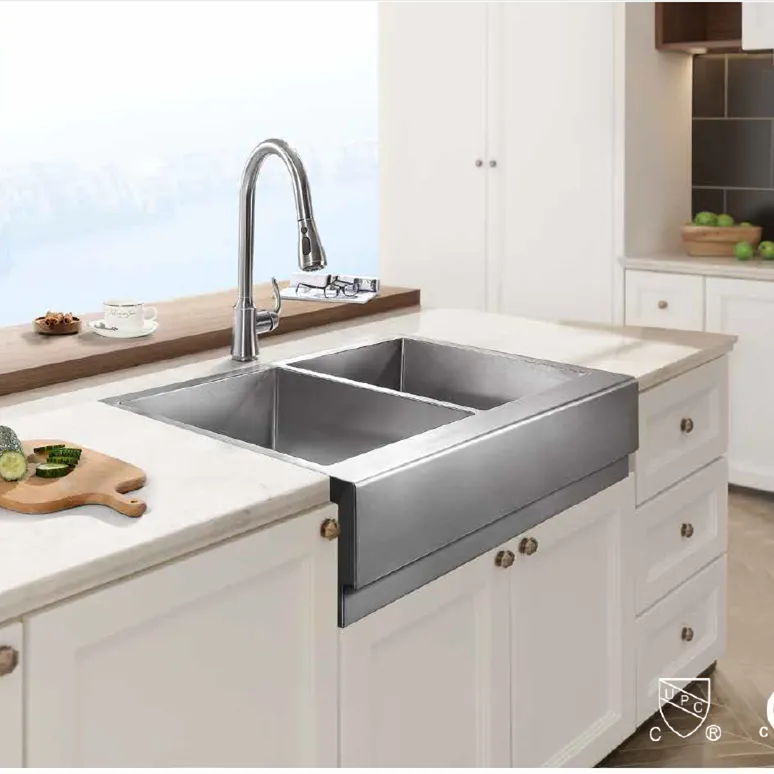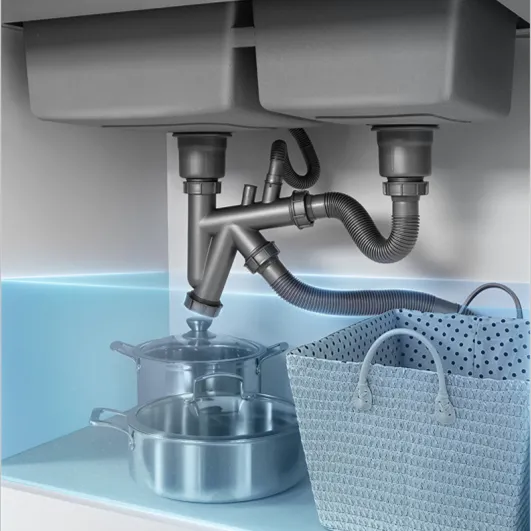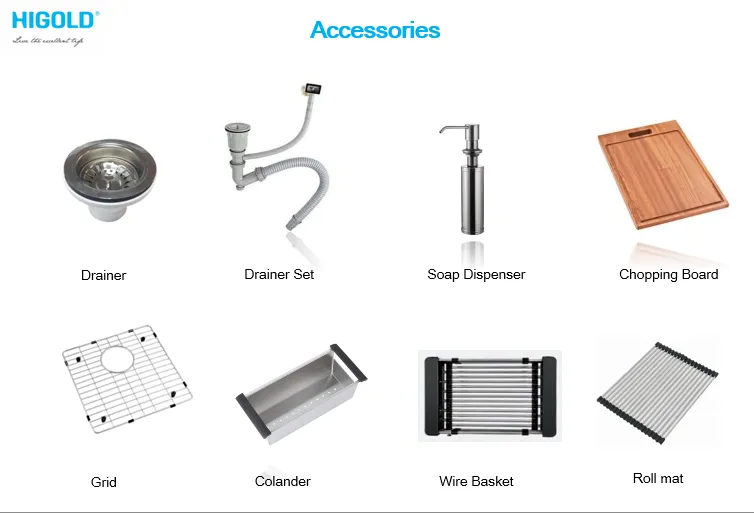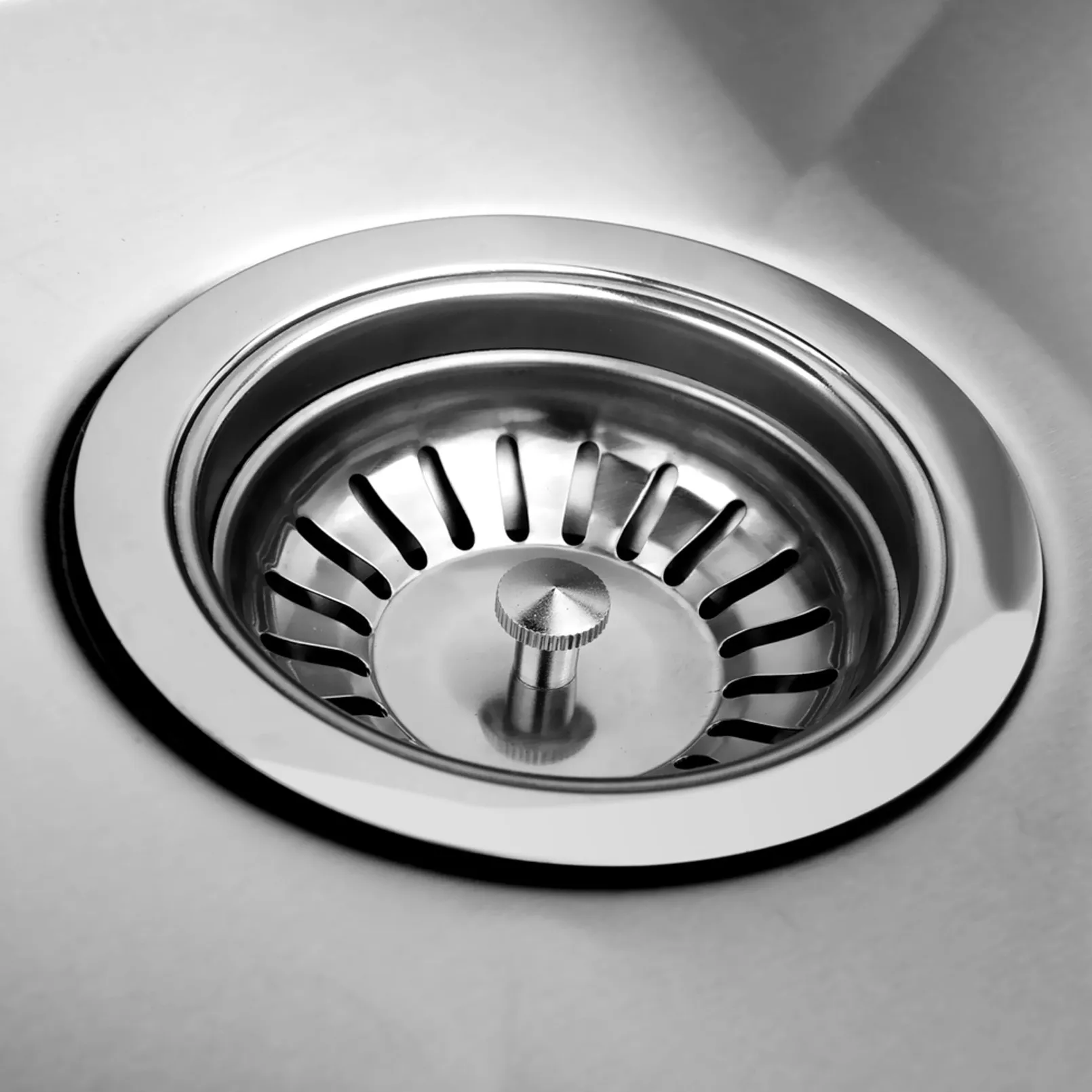In the kitchen, the role of the sink is not limited to washing food and tableware, but its drainage system also plays a vital role. In this drainage system, a seemingly inconspicuous device, the P-trap, plays a decisive role. Although it is hidden under the sink and deep in the pipe, it is rarely noticed, but it is an indispensable and important part of the kitchen.
So, what is the role of the P-trap in the kitchen sink? Why has it become a standard feature of the modern kitchen drainage system? This article will provide a comprehensive interpretation of this topic.

What is a P-trap?
The P-trap is a common pipe structure that is usually installed under the kitchen sink, bathroom washbasin and shower drain. It is named after its appearance because its cross-sectional shape resembles the letter "P". From a design point of view, the P-trap consists of a curved pipe and a straight pipe connected to the drain pipe. Its curved part retains a certain amount of water, which is the origin of the "water storage" in its name.
The design and function of the trap is not a modern invention. Its concept can be traced back to the 19th century, when this device was gradually developed to improve sanitary conditions. Today, the P-trap has become a standard feature of indoor drainage systems, and its core function still revolves around water storage.

What does the P-trap in the kitchen sink do?
The function of the P-trap in the kitchen sink:
1. Prevent sewer odor backflow
2. Intercept solid debris
3. Capture small items that fall
4. Relieve drainage shock
1. Prevent sewer odor backflow
This is the core function of the P-trap. The kitchen sink is connected to the indoor drainage pipe, which is ultimately connected to the municipal sewage treatment system or septic tank. These pipes are filled with various gases, including hydrogen sulfide, methane and ammonia, which have a pungent smell. If there is no obstruction, these gases will flow back into the kitchen along the pipe, seriously affecting the indoor air quality.
The P-type trap retains a small amount of water through its curved structure, which forms a "water seal" that can effectively prevent gas from entering the room from the sewer. The existence of the water seal is equivalent to adding a "gas barrier" between the kitchen and the sewer, ensuring the hygiene and comfort of the indoor environment.
2. Intercept solid debris
When using the kitchen sink in daily life, it is inevitable that some small pieces of food residues, grease or other debris will enter the drain outlet. The curved structure of the P-type trap can play an interception role, preventing these debris from directly entering the main drain pipe, thereby avoiding pipe blockage.
This interception function of the trap makes it an important "filter checkpoint" in the kitchen drainage system. Although it cannot completely replace the drain filter, for slightly blocked drain pipes, the trap can greatly reduce the frequency of maintenance and cleaning.
3. Catch small items that fall
During the use of the kitchen sink, some small items may accidentally fall into it, such as rings, earrings and other valuables. Due to the curved design of the P-trap, dropped items are usually caught in the bend and prevented from being directly flushed into the drain pipe. This feature provides a "recovery opportunity" for accidentally dropped items and avoids losses.
4. Relieve drainage shock
The P-trap can also play a certain buffering role in the drainage process. When water is discharged from the kitchen sink, it quickly enters the drainage pipe, and the curved design of the P-trap can slow down the water flow, avoid excessive impact on the drainage system, and extend the service life of the pipe.

Kitchen sink: What are the common P-trap problems?
Although the P-trap is powerful, it may also encounter some common problems in daily use that affect its normal operation.
1. Evaporation of water seal
If the kitchen sink is not used for a long time, the water stored in the P-trap may gradually evaporate. Once the water seal disappears, the gas in the sewer will flow directly back into the room, causing odor. This phenomenon is especially common in dry climate conditions.
2. Blockage by grease and debris
Kitchen sinks are often used to wash greasy pots and pans, and the wastewater contains a lot of grease and food residue. These debris easily accumulate in the bend of the P-trap, which may cause poor drainage or even complete blockage over time.
3. Improper installation or water leakage
If the P-trap is not properly sealed during installation, it may cause water leakage. Loose pipe connections or aging seals can cause this problem and affect the normal function of the trap.
How to maintain the P-trap in the kitchen sink?
In order to ensure the normal operation of the P-trap, regular maintenance is very necessary. Here are some practical maintenance suggestions:
1. Regular cleaning
It is recommended to remove the P-trap every once in a while to clean the grease and debris inside it. The process of disassembly and cleaning is not complicated, and most home users can do it by themselves.
2. Prevent grease from entering
Try to avoid pouring large amounts of grease into the sink. Grease will solidify when it is cold and easily accumulate in the P-trap, causing blockage. You can use a paper towel to absorb excess grease before pouring the oil, or rinse with hot water and detergent to reduce grease residue.
3. Check for leaks
Regularly check the connection of the P-trap for leaks. If leaks are found, replace the seal or retighten the connection in time.
4. Replenish the water seal
If the kitchen sink has not been used for a long time, you can regularly inject a small amount of clean water into the P-trap to maintain the water seal and prevent odor from flowing back.

Comparison between P-trap and other types of traps
In addition to the P-trap, there are also S-trap and bottle-trap designs. In contrast, the P-trap is widely used in household drainage systems due to its simple structure and stable function.
1. Comparison with the S-trap
The S-trap is usually used for ground drainage, while the P-trap is more suitable for installation on wall pipes. In addition, the P-trap is more common in modern buildings due to its more compact design.
2. Comparison with bottle trap
The bottle trap is shorter and occupies less space, but it can store less water and is not as good as the P-trap in preventing odor backflow. For high-frequency use scenarios such as kitchen sinks, the P-trap is undoubtedly a better choice.
Why are Higold’s kitchen sink products considered high quality?
Higold products undergo rigorous quality checks and are manufactured using advanced technologies including robotic welding, automatic edge grinding, and R-angle processing. All products meet global certification standards such as CUPC, CSA, and CE. This commitment to quality ensures durable, functional, and aesthetically pleasing kitchen sinks and faucets.
As a trusted kitchen hardware manufacturer in China, Higold combines innovation with consistent manufacturing practices to deliver premium products for global markets.


